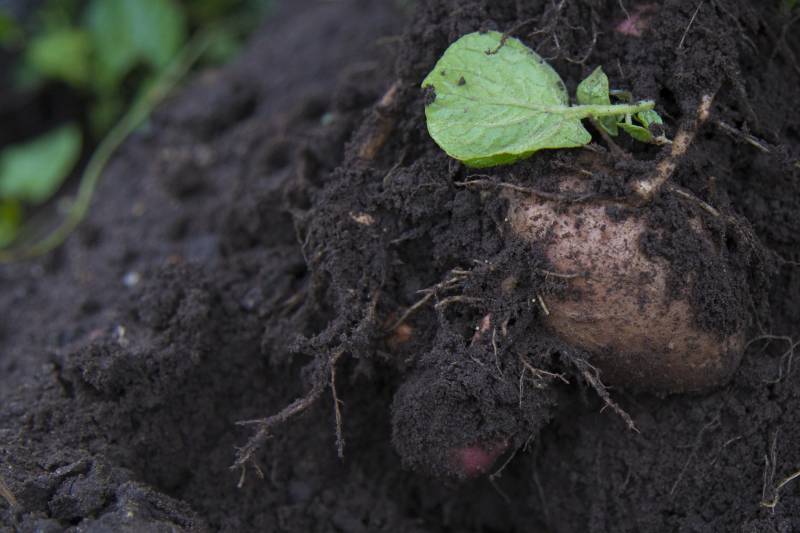
A collaborative project has been announced to improve forecasting of UK’s most important potato pest.
A team of researchers aim to improve the accuracy of a calculator which is used as a forecasting tool for growers to predict potato cyst nematode (PCN).
Potato cyst nematodes are microscopic worm-like pests that lie dormant inside mature cysts and then migrate into potato roots causing irreparable damage to the roots.
Each mature cyst can hold up to 600 eggs so that infested soils can contain several hundreds of eggs per gram of soil.
Unfortunately for potato growers, just five to ten eggs per gram of soil can lead to economic loss, overall estimated to be £26 million annually to the UK potato industry, and normal rotation lengths are too short to provide an adequate period for natural population decline in the absence of a host.
PCN Calculator
To help growers to formulate control strategies, AHDB Potatoes created the ‘PCN Calculator’ for the most troublesome species, Globodera pallida.
The calculator enables PCN population dynamics and potato yields to be forecast for different potato varieties grown under a range of conditions and control strategies.
It’s therefore useful to help growers to investigate their options before growing a crop so that they can achieve sustainable economic returns.
However, the current calculator needs modification and additional data sets to keep up to date with recent advancements in the understanding of PCN biology, shifting varietal trends and new management practices.
20 month project
Senior Research Assistant Bill Watts at Harper Adams University has been employed as part of the 20 month project, which will provide the extra data needed for the calculator.
He’ll primarily be investigating the tolerance of different potato varieties to PCN over different soil types.
He said: “The varieties under investigation include Estima, Lady Rosetta, Marfona, Maris Piper, Markies, Melody, Nectar, Pentland Dell, Royal and Taurus.
“They represent the ten most widely grown varieties in the UK today and are compared to two control varieties; Maris Peer which is intolerant to PCN, and Cara which is tolerant of PCN.”
Population dynamics
The Harper team is investigating PCN population dynamics, the number of PCN eggs in soil before and after cropping, and the quantities of PCN found in potato roots during cropping over two experiments which span two growing seasons.
PCN effects plant emergence rates, crop growth and potato yield and tuber number will also be quantified.
Mr Watts said: “Tolerance is independent of resistance; a point which is often overlooked or misunderstood. Resistance is a measure of a plant’s ability to stop the nematodes from developing and completing a full lifecycle, while tolerance refers to the ability of a plant to achieve an economic yield in the presence of PCN.
“Much emphasis has been placed on investigating resistant varieties, however, information on varietal tolerance to PCN is also important to potato growers.”
The project was first launched in April 2017. The second field experiment on tolerance will be constructed in spring 2018.
